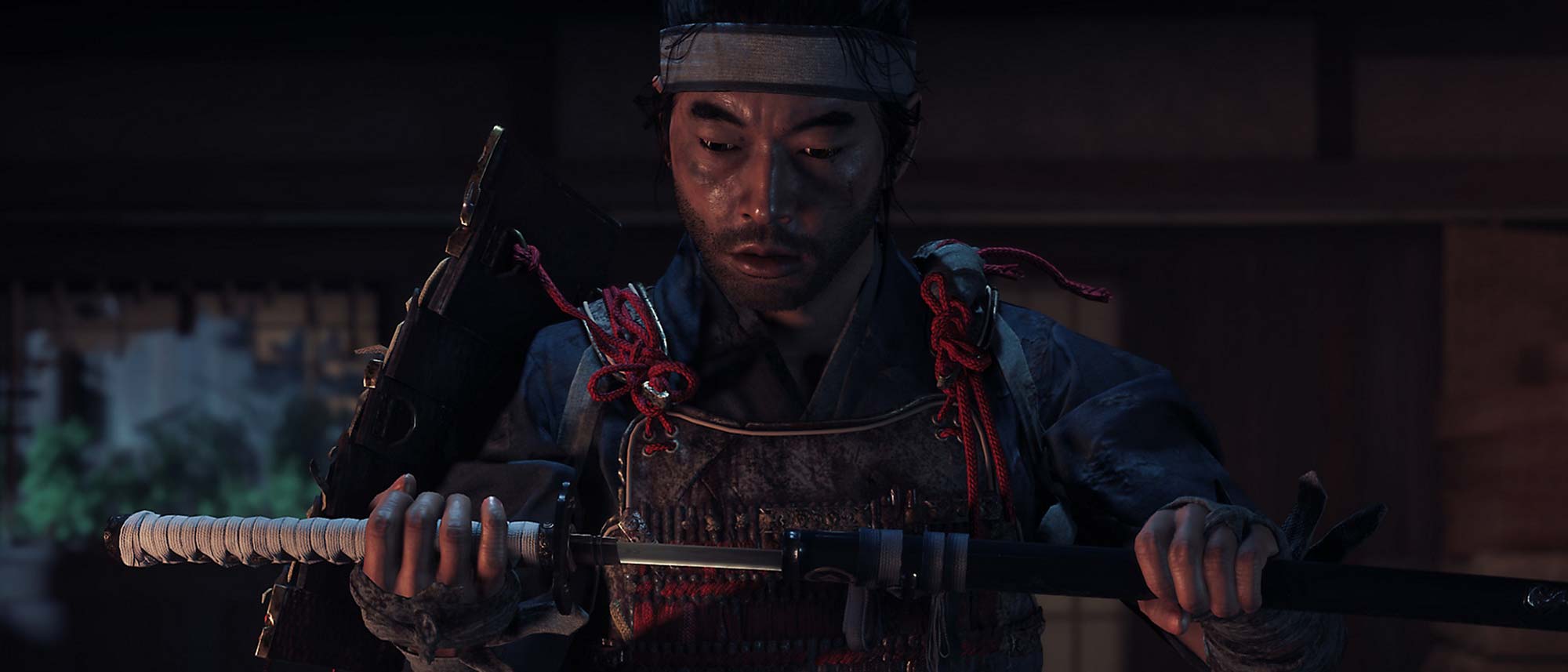Tom's Guide Verdict
Ghost of Tsushima is pretty similar to other open-world games, but a strong combat system and a solid samurai story give it some staying power.
Pros
- +
Fast-paced, fun combat
- +
Extensive character customization
- +
Enjoyable story and characters
Cons
- -
Repetitive side missions
- -
Huge difficulty spikes
- -
Pacing drags in the second half
Why you can trust Tom's Guide
EDITOR'S NOTE: Ghost of Tsushima won "best story" and "best boss level" in the Tom's Guide Awards 2021 for gaming.
Ghost of Tsushima is a game you’ve probably played before. This may sound odd, given that it’s a brand-new IP, developed exclusively for the PlayStation 4, and a complete departure from Sucker Punch’s earlier Infamous series. Rather than a near-future freedom fighter, the game casts you as a samurai in medieval Japan, substituting swords for superpowers and stealth for scaling tall buildings. You’ll embark upon a quest for family honor, and grapple with questions of morality during war. There’s even a “Kurosawa filter,” if you want to play through the whole experience like an old samurai movie.
But for all of its atmospheric trappings, Ghost of Tsushima is not that dissimilar from Infamous — and extremely similar to Assassin’s Creed. It’s an open-world historical action game, where you can either sneak your way past enemies or engage them in open combat. You’ll explore the large world map for semi-meaningful side content, riding from objective to objective on horseback, stopping occasionally for some light platforming to reach out-of-the-way collectibles.
Release date: July 17, 2020
Price: $59.99 / £54.99
Platform: PS4
- The 10 best games to play after Ghost of Tsushima
- The best PS4 games you can buy now
Familiarity doesn’t have to breed contempt, though, particularly since Ghost of Tsushima has a fast-paced, fun combat system and an excellent setting. If you have any affinity for Japanese history, old samurai films or open-world games with surprisingly good combat, Ghost of Tsushima is a guaranteed good time — at least until the novelty wears off.
Read on for our full Ghost of Tsushima review.
Ghost of Tsushima gameplay
Ghost of Tsushima casts you as Jin Sakai: a samurai on the Japanese island of Tsushima in the late 13th century CE. To fend off the invading Mongol forces, Jin must explore the island of Tsushima, face off against invaders in open combat and sneak his way into fortified settlements with a variety of skills and gadgets. Half the game is open-world exploration, one-quarter is swordfighting and one-quarter is stealth.
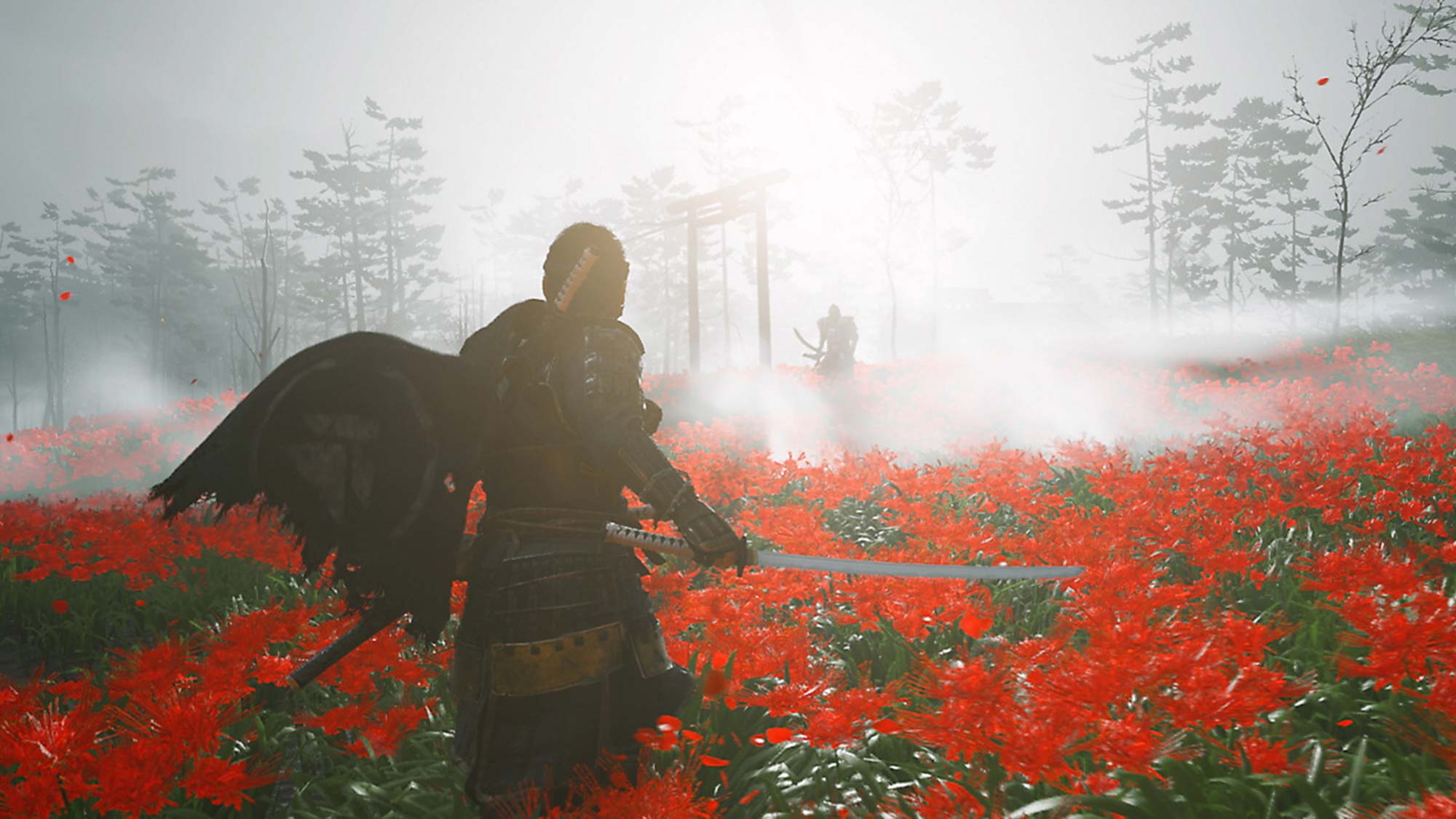
In other words: Ghost of Tsushima is more or less what you’d get if you set an Assassin’s Creed game in Japan, with a bigger focus on aesthetics and sword combat. And it succeeds on pretty much every count.
Let’s discuss the swordfighting first, as it’s easily the best part of the game. Jin is armed with two upgradeable swords: a long katana for open combat, and a short wakizashi for stealth. Throughout the game, you’ll fight off various Mongols, ronin and bandits. Jin can learn four different fighting styles and switch among them at-will: one to counter swords, one to counter shields, one to counter spears and one to counter huge “brute” enemies.
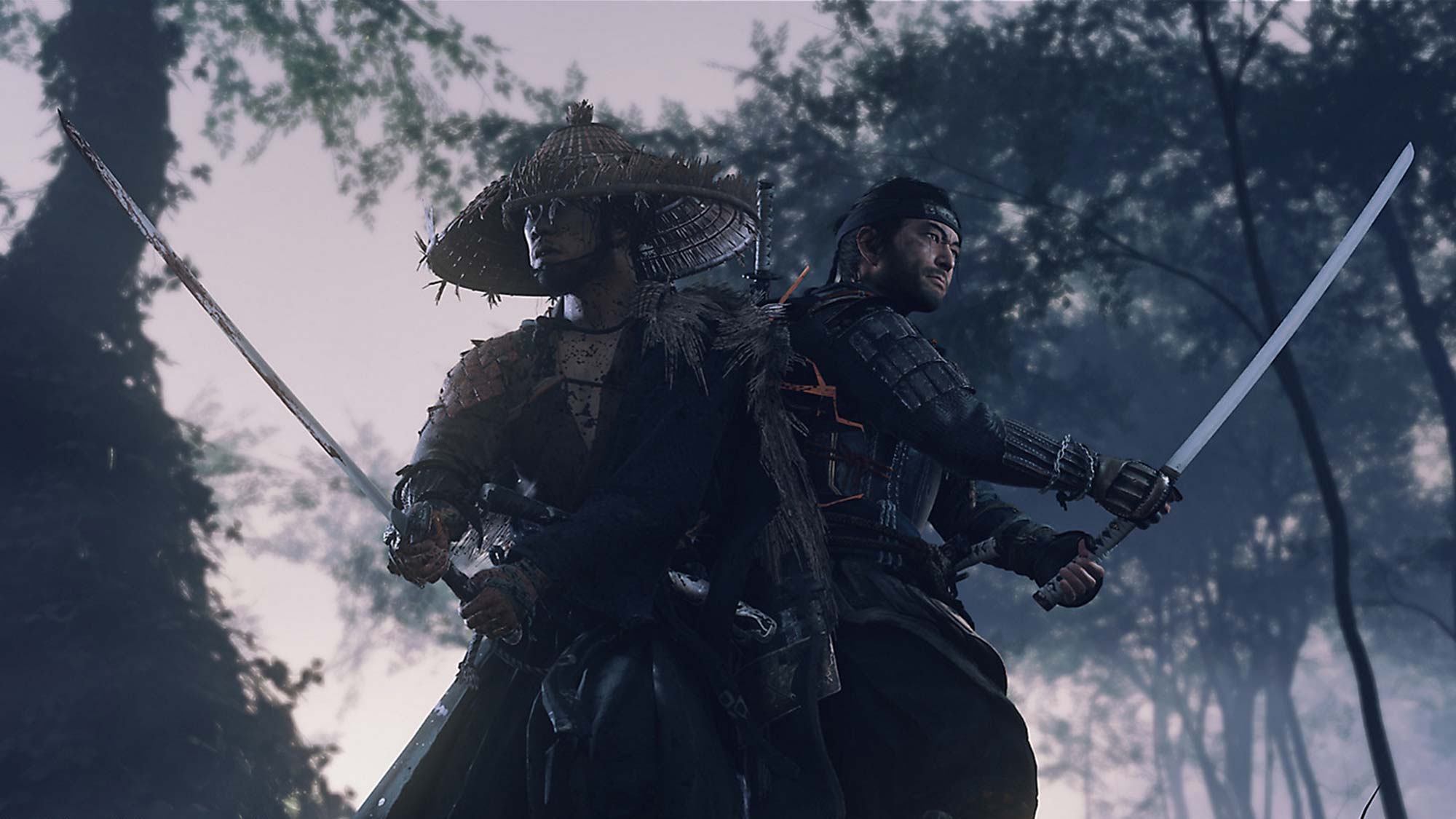
I must have had dozens or hundreds of standoffs during my time with Ghost of Tsushima, and it never once got old.
At first, your sword options are limited to blocking and attacking. But as you learn new skills and defeat Mongol warlords, you’ll learn the “stances” that let you counter different enemy types. You can switch among them at-will during battle, and I was quite impressed at how gentle the learning curve is. Toward the beginning of the game, I found it difficult to switch between a sword stance and a shield stance; by the end, I was switching stances effortlessly from enemy to enemy, while alternating sword strikes with bows and arrows, blow darts, sticky bombs and throwing daggers (kunai).
Sword combat feels intuitive and fluid, and incorporates some samurai flavor into the mechanics as well as the aesthetics. For example: You can approach a group of enemies openly and challenge them to a “standoff,” where you need to hold your attack until the last possible second for a one-hit kill. As Jin gets more powerful and acquires better gear, you can defeat up to five enemies in a single standoff, like the lone hero in a samurai movie. I must have had dozens or hundreds of standoffs during my time with Ghost of Tsushima, and it never once got old.

You can also infiltrate enemy bases with stealth, sneaking up on enemies to assassinate them, distracting them with firecrackers, making yourself disappear with smoke bombs and so forth. While it’s not as deep as the sword combat, it’s all functional, and fairly forgiving of mistakes. This is not a tear-your-hair-out, one-false-move-and-you’re-done stealth experience. However, many of the story missions treat it that way, making them much more tedious and punishing than the side content.
Ghost of Tsushima exploration and customization
When you’re not fighting off foes, you’ll explore the enormous island of Tsushima, which is divided into three “districts,” each one with a certain number of locations under Mongol control. As you liberate settlements, you’ll open up more and more of the map, which is a pretty organic way to handle exploration — or you could just jump on your horse and see what’s out there.
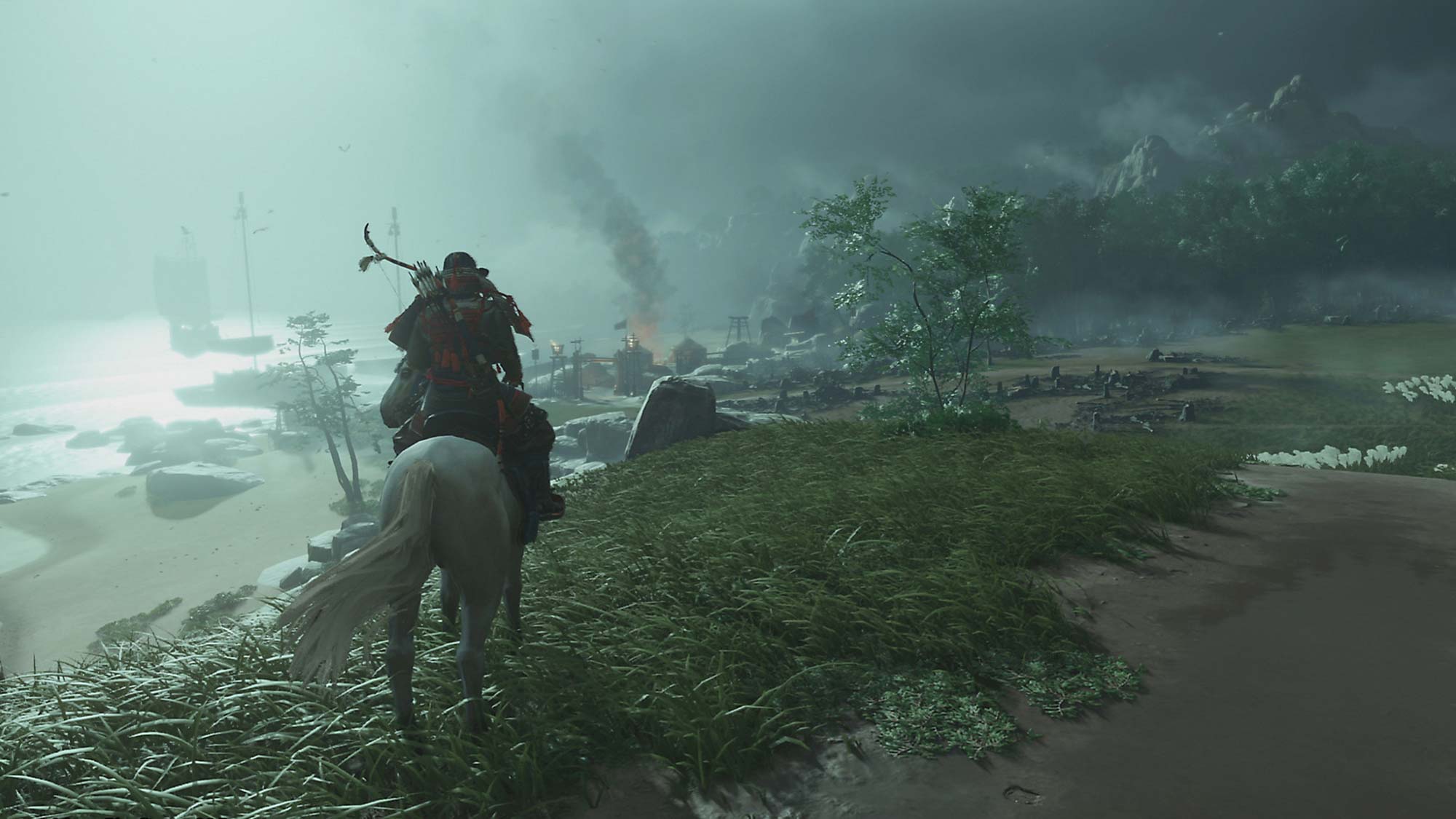
There’s plenty to find. There are fox dens, where helpful animals will lead you to equippable charms. There are relaxing hot springs that increase your health. There are hard-to-reach Shinto shrines that require some nimble platforming. There are even quiet spots in nature where you can compose your own haikus. There are also character-driven “Tales,” which act like more traditional side quests. As you level up, you can also spend your upgrade points on exploration powers, which help guide you to the next side activity, which is a pretty clever midpoint between wandering aimlessly and just showing you where every side encounter is. However, like many open-world games, there is so much side content in Ghost of Tsushima that it gets repetitive long before the end — particularly since most of the rewards are meager.
Aesthetically, the game is very deep, offering you tons of different headbands, helmets, hats, face masks, armor sets, dyes, scabbards and so forth. You can make a Jin Sakai that probably doesn’t look like any other player’s Jin Sakai — and there’s a very good chance that you can make him look just like the hero of your favorite samurai movie. Upgrading equipment can be a bit of a pain, since you’ll need to constantly scrounge for supplies and resources, but if you focus your efforts to just a few weapons and armor sets, you’ll have everything you need by the end of the game.
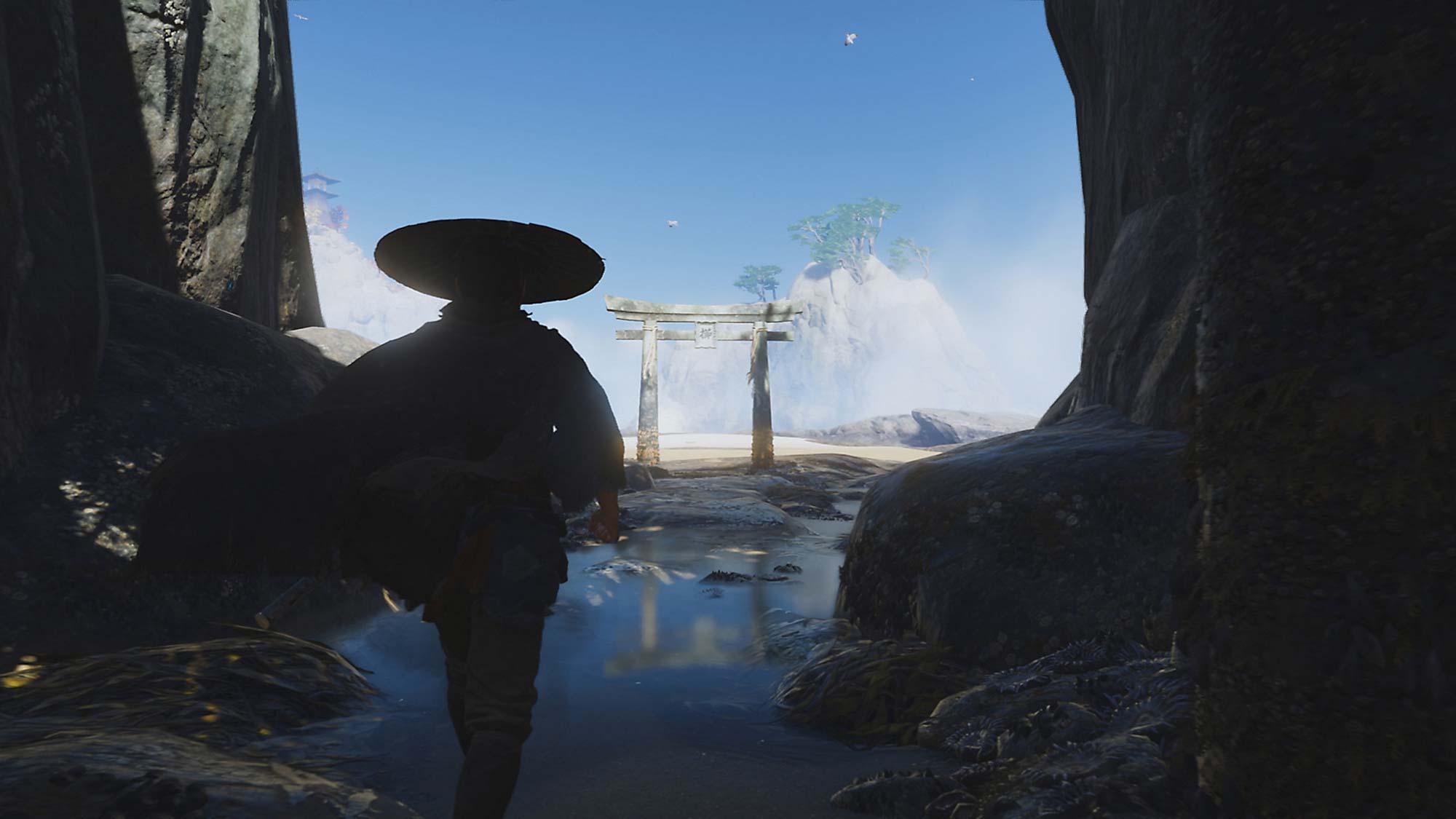
There is so much side content in Ghost of Tsushima that it gets repetitive long before the end — particularly since most of the rewards are meager.
Mechanically, though, Ghost of Tsushima actually gets less interesting the longer you play. Jin has a ton of skill trees available to him — parrying, dodging, four different swordsman stances, gadgetry, general skills, exploration powers and so forth. Having to decide which skill is the most pressing and foregoing other abilities creates a great push-and-pull between “I need this now” and “I might need this later.”
However, by about halfway through the game, you’ll probably have mastered all of your favorite abilities. By the end of the game, you’ll have enough points to master everything. I can’t help but think the game might have been a little more interesting if it made you focus on certain skills and forego others.
Ghost of Tsushima tries to counter this power-creep with massive difficulty spikes at the beginning of each new Act (there are three altogether, one for each district), but the game runs out of new ideas well before the end, making most of Act II and nearly all of Act III a bit of a slog.
Ghost of Tsushima story
The story in Ghost of Tsushima held my attention from beginning to end, thanks to a clean, logical narrative and a cast of three-dimensional characters. If you’ve ever seen a classic samurai film, or learned about the Mongol invasion of Japan, or know the basics of a three-act story structure, there’s nothing mind-blowing here. But there are a few good twists and turns, and the cast is strong enough to carry the narrative through a few slow patches.
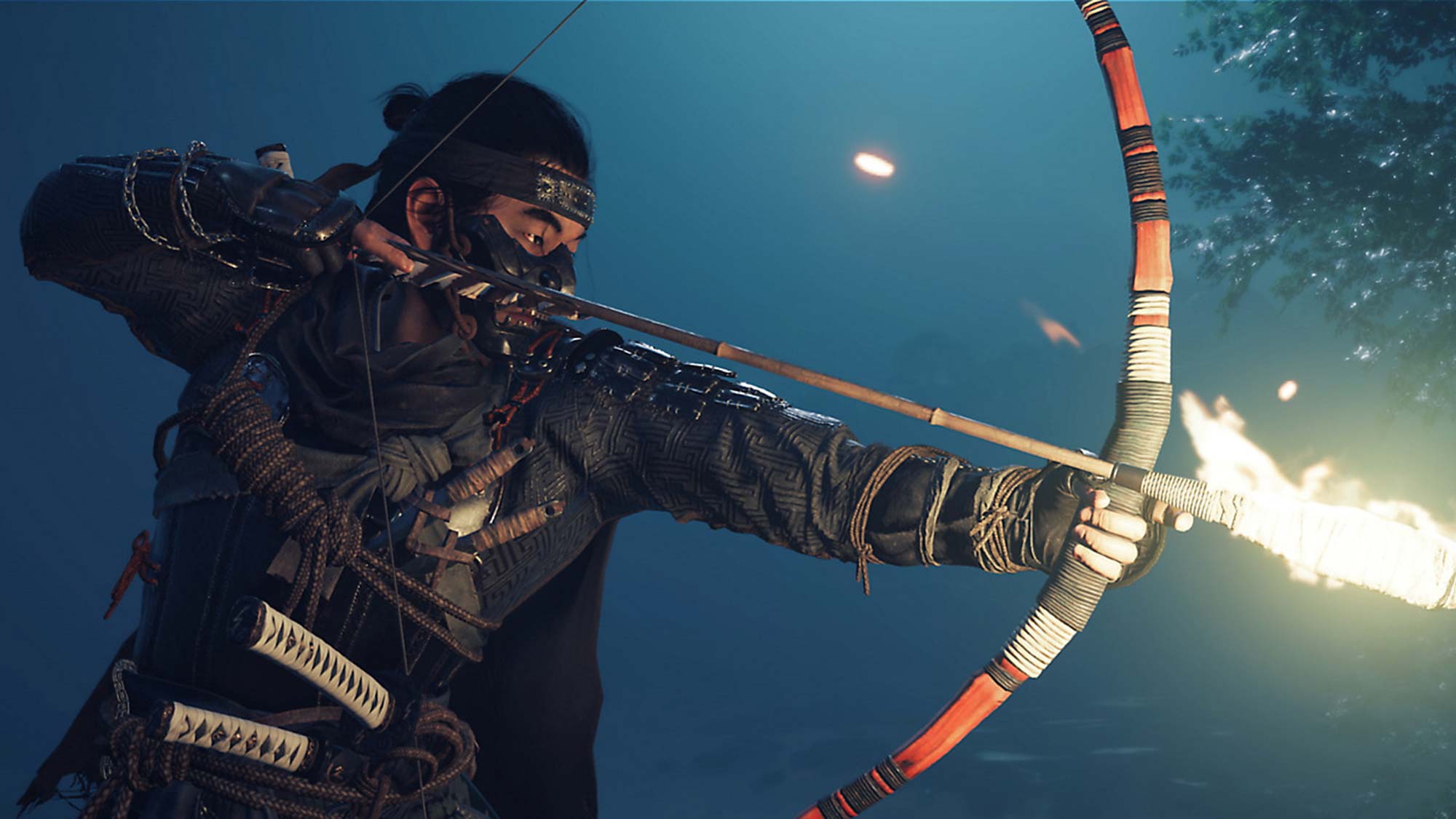
Ghost of Tsushima tells a fictionalized version of the Mongol invasion of Japan in 1274 CE. Khotun Khan, cousin of Kublai, intends to lead an army into Japan, using the island of Tsushima as a staging ground. Badly wounded in the Khan’s initial attack, samurai Jin Sakai vows to oust the Mongols and rescue his uncle, the honorable Lord Shimura, even if he has to embrace deception, terror and assassination to do so.

The central tension between Jin the samurai and Jin the Ghost is strong enough to carry most of the game, and Khotun Khan turned out to be a better villain than I expected. As the grandson of Genghis and the cousin of Kublai, he feels he must forge his own place in history, and who can blame him?
My only real complaint was that the story doesn’t reflect the gameplay. Early on, Lord Shimura warned Jin against using shady tactics in a flashback, and I abided by his words. I faced every enemy in the game head-on and didn’t touch the underhanded “Ghost” powers. Even so, Khotun taunted Shimura with news of my “dishonorable” actions, and an Act II story mission forced me into some extremely dark moral territory. The game lets you build your own Jin, but doesn’t do anything to reflect the choices you make with him.
Ghost of Tsushima graphics and sound
Reviewed on a standard 1080p PS4, Ghost of Tsushima looks pretty good. The level design is beautiful, from remote fishing villages, to snowy mountains, to fields of autumn leaves. If you have a favorite Japanese aesthetic trope, it’s probably in here somewhere, from swirling cherry blossoms to Shinto shrines overlooking the ocean. The game wants to create a mood more than it wants to recreate the real medieval Tsushima, but it definitely succeeds.
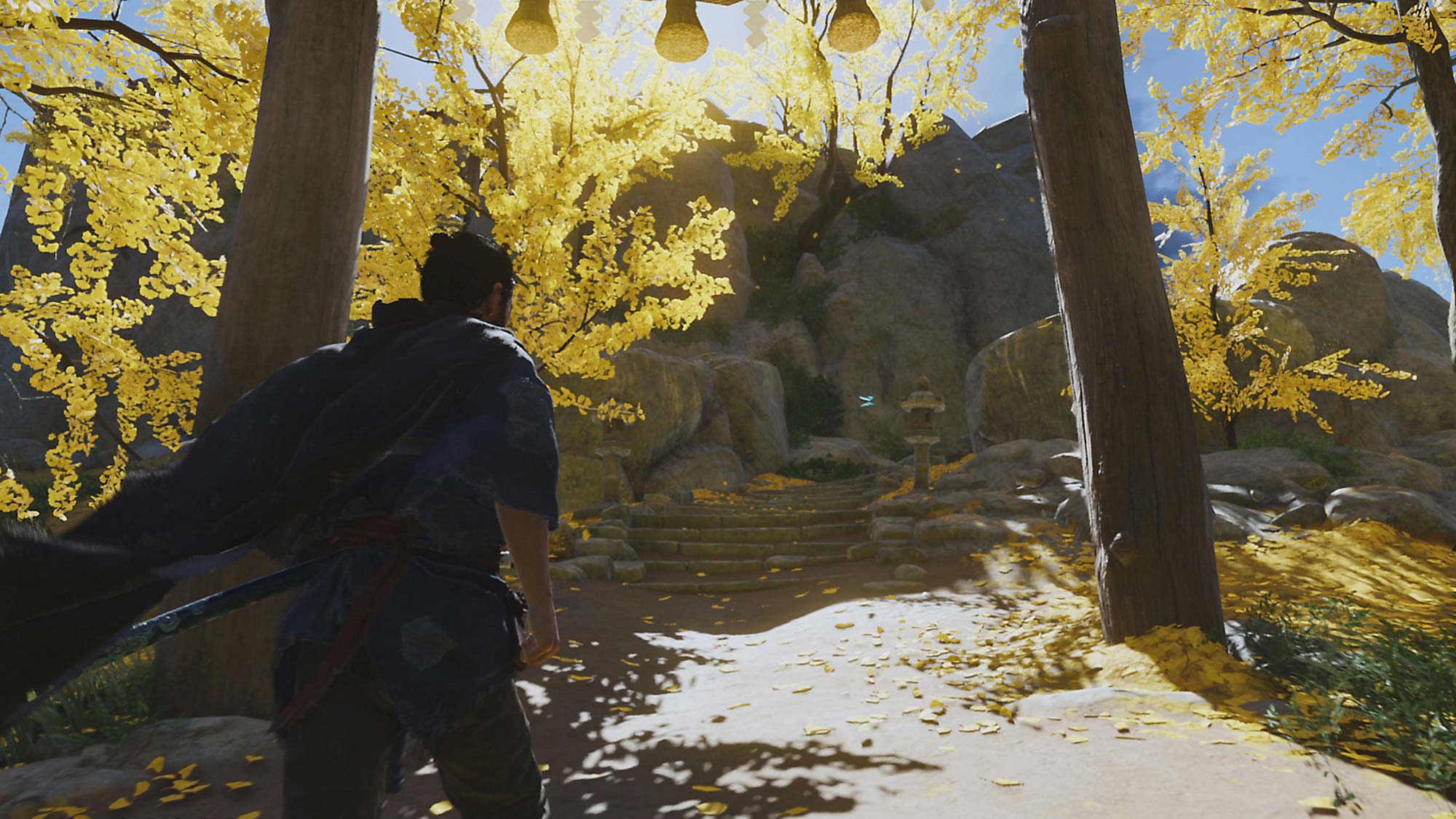
My favorite aesthetic touch actually has to do with navigation. Ghost of Tsushima has a minimalist HUD, and that means there’s no minimap. As such, to find your next objective, you’ll rely on the Guiding Wind: a gentle breeze that blows grass, flowers and leaves to indicate where to go next. You control the Guiding Wind by brushing up on the DualShock 4’s touchpad. It’s an unobtrusive marriage of gameplay and aesthetics, and I wish more games followed its lead.

The music consists of a lot of strings and flutes, as you might expect. It’s all pleasantly atmospheric and gets the job done. The voice acting is more of a mixed bag. The English voices sound a little stilted and don’t always match the characters’ lip movements — almost as though you’re watching a dubbed movie. I get the impression that you’re supposed to turn on the Japanese language track and use subtitles, which is an option, although one that I used infrequently.

One potentially cool idea is Ghost of Tsushima’s “Kurosawa mode,” which adds a grainy black-and-white filter and changes the framerate somewhat. Combined with the Japanese language track and English subtitles, this makes Ghost of Tsushima look just like a samurai film from the ‘50s or ‘60s. It’s incredibly cool to use this mode now and then, but it’s not really practical over the long term. A lot of important gameplay cues are blue or orange, and the colors in the environment are quite striking. I’d often play a single mission in Kurosawa mode, find it frustrating, and change right back.
Ghost of Tsushima verdict
Ghost of Tsushima has a solid story, extremely fun combat and a rewarding open-world. However, it also drags on entirely too long and can’t quite reconcile its narrative with its gameplay. You’ve almost certainly played a game like Ghost of Tsushima before, and it doesn’t do enough with the formula to really stand out in a crowded field.
Still, I’d be lying if I said I wasn't hooked from start to finish. It’s probably one of my favorite games of the year so far. More than once, I had to drag myself away from the screen only because I’d run down the batteries on two controllers in a row.
If you have an affinity for samurai stories, open-world adventures or refined sword combat, Ghost of Tsushima is an easy recommendation. But if you’ve had your fill of liberating towns, collecting doodads and riding from one waypoint to another on horseback, it’s better to just load up a Kurosawa film on HBO Max.
Marshall Honorof is a senior editor for Tom's Guide, overseeing the site's coverage of gaming hardware and software. He comes from a science writing background, having studied paleomammalogy, biological anthropology, and the history of science and technology. After hours, you can find him practicing taekwondo or doing deep dives on classic sci-fi.
